In today's competitive environment, every piece of hardware, software license, and cloud service is a critical business component. Managing this sprawling digital estate without a clear strategy, however, can lead to spiraling costs, glaring security vulnerabilities, and significant compliance risks. Effective IT asset management (ITAM) is no longer a luxury for large enterprises; it's a foundational necessity for any business aiming to maintain control, optimize spending, and drive operational efficiency.
This guide moves beyond theory to provide a clear, actionable blueprint. We will explore 10 specific it asset management best practices designed to give you complete command over your technology ecosystem. You will learn how to implement comprehensive asset discovery, streamline lifecycle management, and ensure strict software license compliance. By implementing these proven strategies, you can gain total visibility over your entire technology portfolio, from initial procurement to secure disposal. This ensures that every asset is accounted for, fully optimized, and delivering maximum value to your organization. This framework is your path to transforming technology from a reactive expense into a strategic, well-managed business driver.
1. Comprehensive Asset Discovery and Inventory Management
Effective IT asset management begins with a single source of truth: a complete, accurate, and real-time inventory of every asset your organization owns. Comprehensive asset discovery is the foundational practice of systematically identifying and cataloging all hardware, software, cloud instances, and mobile devices. Without this visibility, it's impossible to manage, secure, or optimize your IT environment, leaving you vulnerable to shadow IT, security breaches, and wasteful spending.
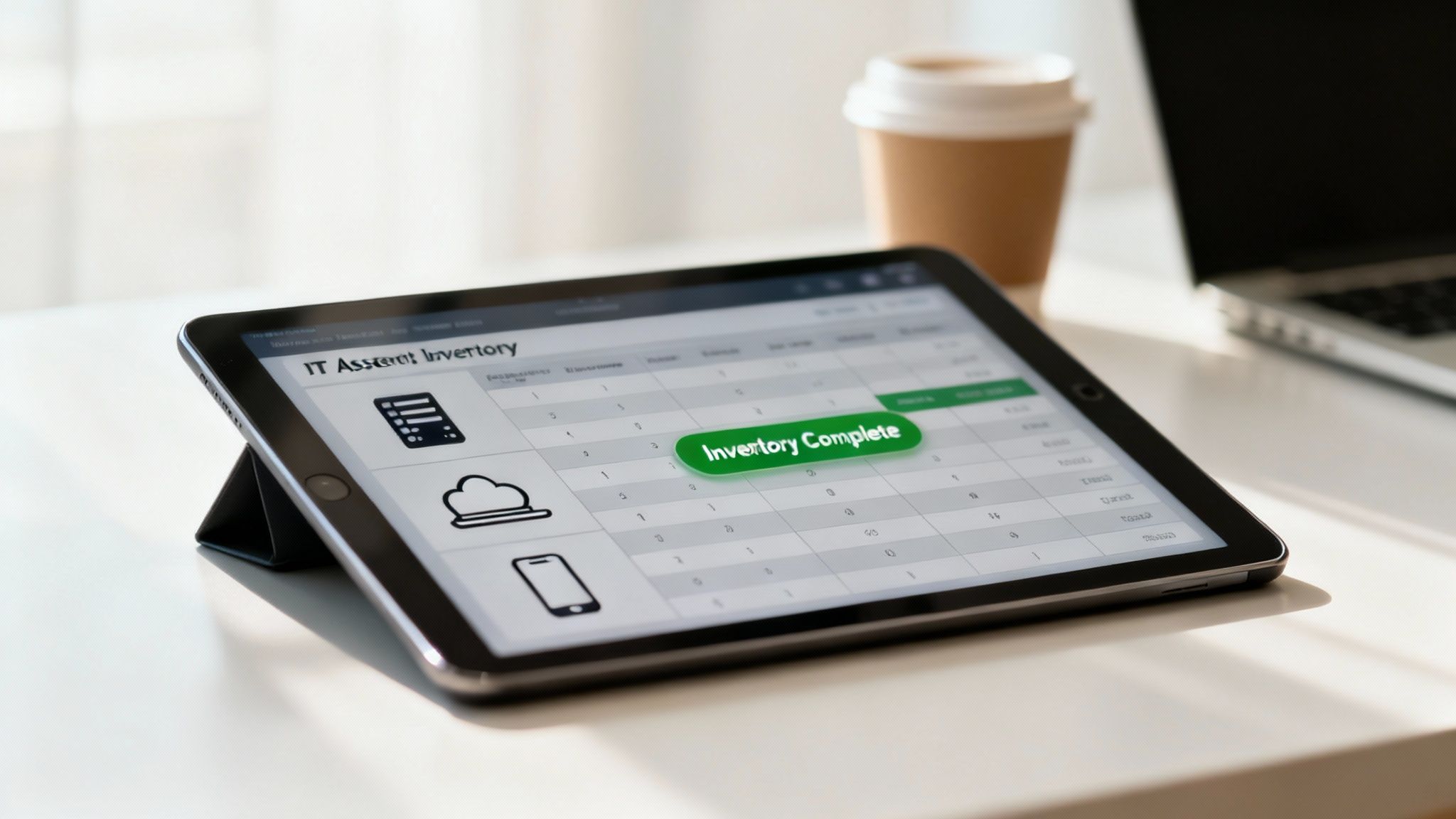
This practice involves using automated tools to scan your network and cloud environments to find and record every connected device and software installation. The goal is to move beyond manual spreadsheets, which are prone to errors and quickly become outdated.
Why It's a Top Practice
A comprehensive inventory is the bedrock of all other it asset management best practices. It directly supports critical functions like cybersecurity by identifying unauthorized devices, ensures software license compliance to avoid costly fines, and provides the data needed for strategic financial planning and technology refreshes.
Key Insight: You cannot secure, manage, or optimize what you cannot see. Complete asset visibility is the first step toward a mature IT governance strategy.
Actionable Implementation Steps
- Deploy Automated Discovery Tools: Use tools that automatically scan networks, cloud accounts (AWS, Azure, GCP), and endpoints to populate your asset database. This reduces manual labor and improves accuracy. Platforms like ServiceNow Discovery or Microsoft's System Center Configuration Manager are powerful examples.
- Establish Naming Conventions: Create and enforce a standardized naming convention for all assets. This ensures consistency and makes it easier to search, filter, and report on assets.
- Schedule Regular Reconciliation: Don't treat inventory as a one-time project. Implement quarterly or semi-annual cycles to reconcile your discovered asset data against procurement records and physical counts to identify discrepancies.
- Start with Critical Systems: If inventorying the entire organization is too daunting, begin by focusing on critical business services and their supporting assets. Expand your scope from there.
2. Asset Lifecycle Management (ALM)
Beyond just knowing what assets you have, effective IT management requires overseeing each asset's entire journey, from procurement to retirement. Asset Lifecycle Management (ALM) is the strategic practice of tracking and managing an asset through every stage: acquisition, deployment, maintenance, and eventual disposal. This holistic view enables organizations to maximize the value derived from each asset, minimize the total cost of ownership (TCO), and make proactive decisions about technology refreshes and investments.
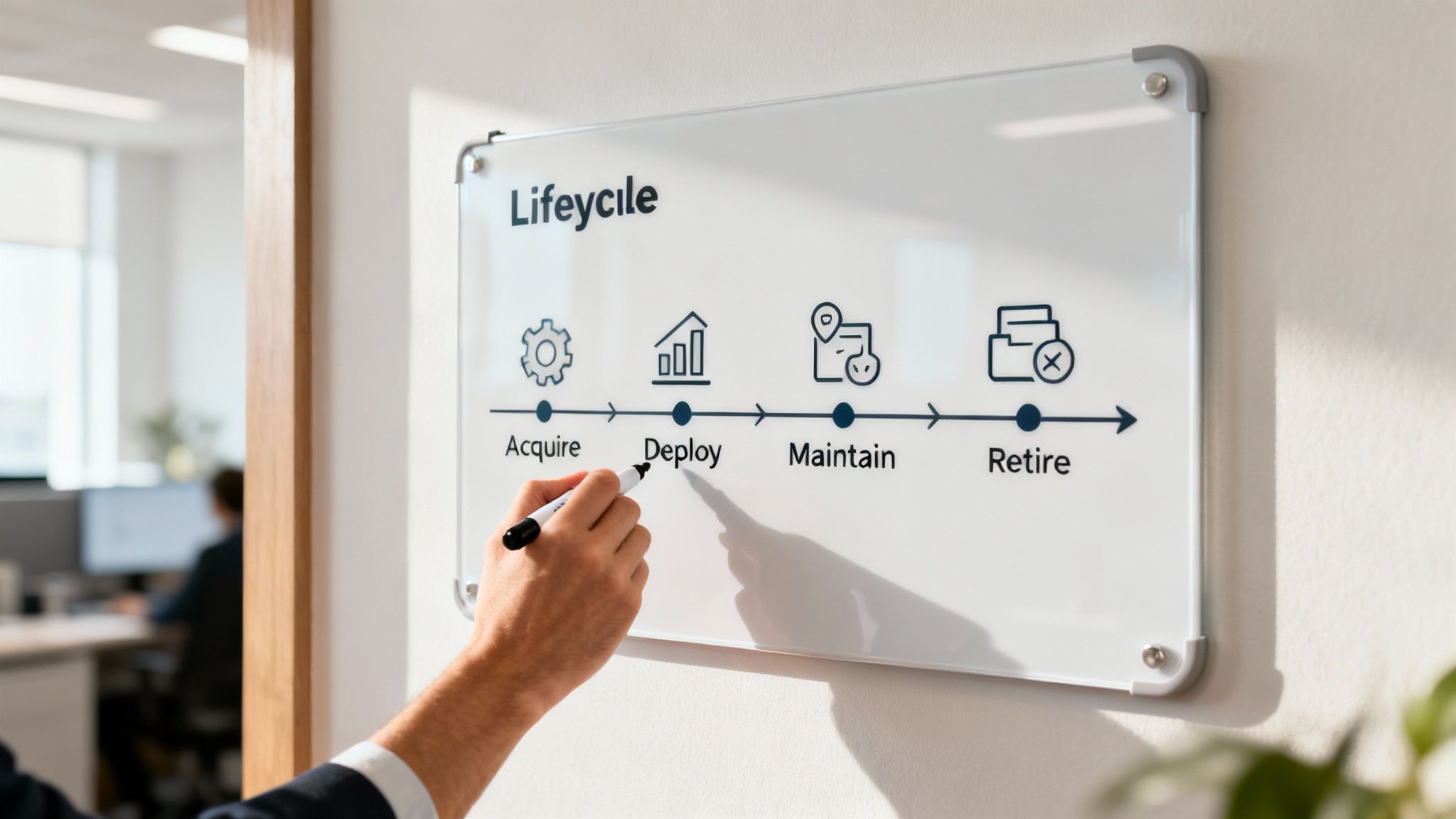
This approach transforms asset management from a simple inventory task into a core financial and operational strategy. By understanding where each asset is in its lifecycle, you can anticipate needs, budget more accurately, and avoid the performance and security risks associated with outdated equipment.
Why It's a Top Practice
Implementing ALM is a crucial step in maturing your it asset management best practices. It ensures you aren't overspending on unnecessary maintenance for aging hardware or, conversely, retiring assets that still have a useful life. This practice directly impacts your bottom line by optimizing procurement schedules, reducing downtime, and ensuring secure and compliant disposal of sensitive data.
Key Insight: Treating IT assets as investments with a defined lifecycle, rather than just purchases, unlocks significant financial and operational efficiencies.
Actionable Implementation Steps
- Define Clear Lifecycle Stages: Formally document the stages for different asset classes (e.g., laptops, servers, software). Establish clear criteria for transitioning an asset from one stage to the next, such as age, performance metrics, or warranty status.
- Integrate with Procurement Systems: Connect your asset management platform with your procurement software. This creates a seamless flow of information from purchase order to asset deployment, ensuring accurate data from day one.
- Schedule Regular Refresh Assessments: Proactively assess assets approaching their end-of-life. Use performance data and business needs to determine the optimal time for a technology refresh, avoiding productivity loss from failing hardware.
- Document Secure Disposal Procedures: Create a standardized, documented process for asset retirement. This must include procedures for secure data wiping that comply with industry regulations like HIPAA or GDPR, followed by environmentally responsible disposal.
3. Software License Compliance and Management (SAM)
Effective Software Asset Management (SAM) is the practice of actively managing, controlling, and protecting software licenses across their entire lifecycle. It involves tracking installations, usage, and purchase records to ensure your organization complies with all vendor licensing agreements. Without a strong SAM program, businesses risk severe financial penalties from software audits, overspending on unused licenses, and security vulnerabilities from unauthorized software.
This practice moves beyond simple inventory by tying software installations to specific purchase orders and license entitlements. It ensures that you are neither under-licensed (a legal risk) nor over-licensed (a financial waste), optimizing your software spend and minimizing compliance-related dangers.
Why It's a Top Practice
Robust SAM is a critical component of it asset management best practices because it directly mitigates significant legal and financial risks. Software vendors like Microsoft and Oracle are known for aggressive audit programs, and non-compliance can result in fines that cripple a small or mid-sized business. Proper management also reveals cost-saving opportunities by re-harvesting unused licenses.
Key Insight: Software license compliance isn't just an IT task; it's a financial and legal imperative. Every unmanaged software installation represents a potential liability.
Actionable Implementation Steps
- Conduct Regular Software Audits: Perform internal audits at least annually to compare installed software against purchased licenses. This prepares you for vendor audits and identifies compliance gaps before they become costly problems.
- Centralize License Records: Maintain a central, secure repository for all software purchase records, contracts, and license entitlement documents. This creates a single source of truth for your compliance position.
- Utilize Automated SAM Tools: Deploy tools like Flexera or Microsoft's SAM solutions to automatically discover software installations and match them against your license inventory, flagging discrepancies for review.
- Establish a SAM Governance Committee: Create a small, cross-functional team including IT, finance, and legal to oversee the SAM program, set policies, and manage vendor relationships and renewals.
4. Asset Configuration Management (CM)
Beyond simply knowing what assets you have, effective IT asset management requires understanding how they are configured and interconnected. Asset Configuration Management (CM) is the practice of establishing and maintaining consistent, accurate records of each asset's specifications, settings, and relationships with other components. This granular detail is crucial for maintaining system stability, streamlining troubleshooting, and managing changes effectively.
This practice, often supported by a Configuration Management Database (CMDB), maps the complex web of dependencies within your IT infrastructure. Instead of just listing a server, for example, CM tracks its OS version, patch level, installed applications, and which business services rely on it.
Why It's a Top Practice
Robust configuration management is a cornerstone of mature it asset management best practices. It drastically reduces incident resolution time by providing a clear map of dependencies, prevents outages by enabling impact analysis before changes are made, and ensures that systems are built to a consistent, secure standard. It is essential for supporting both ITIL processes and modern DevOps methodologies.
Key Insight: While an inventory tells you what you have, configuration management tells you how it works and what it connects to, turning raw data into operational intelligence.
Actionable Implementation Steps
- Establish Configuration Baselines: Define and document a standard, approved configuration for critical asset types (e.g., servers, workstations). These baselines serve as a benchmark for compliance and security checks.
- Automate Configuration Discovery: Use tools like AWS Config or Micro Focus Universal CMDB to automatically discover and record asset configurations and their relationships. This minimizes manual effort and ensures data is current.
- Define Configuration Items (CIs): Clearly define what constitutes a CI in your environment. Start with critical assets like servers, network devices, and core business applications, then expand your scope over time.
- Integrate with Change Management: Link your CMDB to your change management process. Before approving any change, review the affected CIs to assess potential impact on related systems and services.
5. Mobile Device and Endpoint Management (MDM/EMM)
In an era defined by remote work and Bring Your Own Device (BYOD) policies, managing the explosion of endpoints is a critical challenge. Mobile Device Management (MDM) and Enterprise Mobility Management (EMM) provide a centralized framework for controlling, securing, and enforcing policies on smartphones, tablets, and laptops. This ensures that every device accessing corporate data, regardless of its location or ownership, adheres to your security and compliance standards.
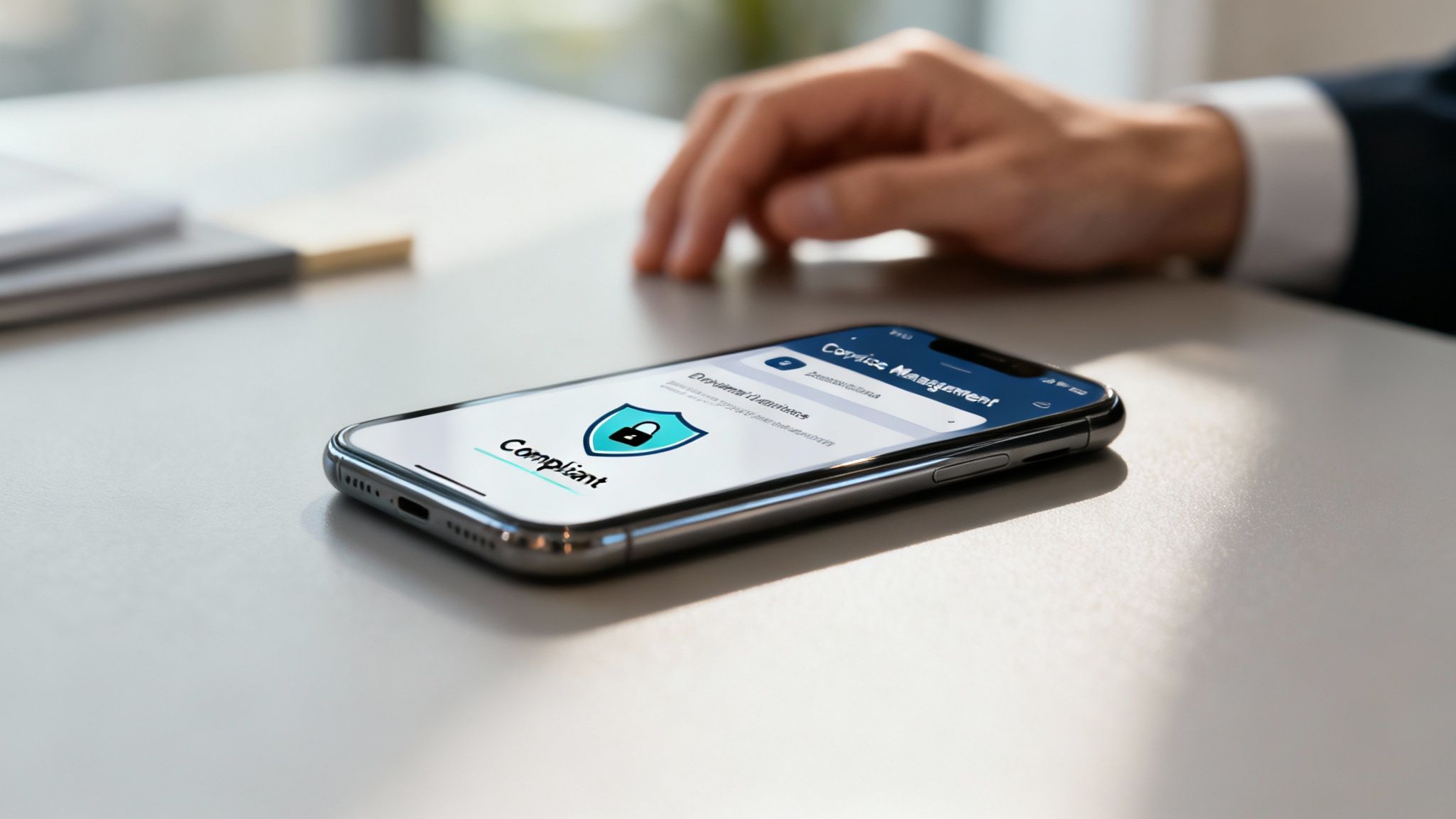
These solutions allow administrators to remotely configure settings, distribute applications, and wipe data from a lost or stolen device. By integrating MDM/EMM into your IT asset management strategy, you extend visibility and control beyond the traditional office perimeter, directly addressing modern security threats.
Why It's a Top Practice
Effective MDM/EMM is essential for mitigating the risks associated with a mobile workforce. It is one of the most important it asset management best practices for securing sensitive data, ensuring compliance with regulations like GDPR and HIPAA, and improving operational efficiency by automating device provisioning and support. It transforms mobile assets from potential liabilities into secure, productive tools.
Key Insight: Your security perimeter is no longer your office walls; it is every device that accesses your data. Centralized endpoint management is non-negotiable for modern IT governance.
Actionable Implementation Steps
- Establish Clear BYOD Policies: Document and communicate clear guidelines for personal device usage. Specify what data can be accessed, minimum security requirements (like passcodes and encryption), and the company's rights to manage the device.
- Implement a Robust MDM/EMM Platform: Choose a solution that fits your ecosystem, such as Microsoft Intune for Azure-integrated environments or VMware Workspace ONE for comprehensive enterprise mobility.
- Use Containerization to Separate Data: Protect corporate data by creating an encrypted, managed container on employee-owned devices. This separates personal apps and data from business information, balancing security with user privacy.
- Automate Compliance and Enforcement: Configure your MDM platform to automatically detect and remediate non-compliant devices, such as those that are jailbroken or missing critical security updates.
6. Asset Performance Monitoring and Optimization
Beyond simply knowing what assets you have, effective IT asset management involves understanding how they are performing. Asset performance monitoring is the practice of continuously tracking key metrics across your hardware, software, and cloud infrastructure to identify bottlenecks, predict failures, and optimize resource utilization. This data-driven approach shifts IT management from a reactive to a proactive model, preventing downtime and maximizing the value derived from each asset.
This practice utilizes specialized tools to collect and analyze performance data, such as CPU usage, memory consumption, application response times, and network latency. The goal is to ensure assets are not only functional but are operating efficiently to meet business demands without being over-provisioned.
Why It's a Top Practice
Performance monitoring is one of the most critical it asset management best practices for ensuring business continuity and cost efficiency. It allows you to spot degrading performance before it causes a major outage, identify underutilized servers that can be decommissioned, and ensure cloud spending aligns with actual usage, thereby preventing budget overruns.
Key Insight: An asset that is "online" but performing poorly is a liability. Proactive performance optimization turns your IT infrastructure from a potential risk into a reliable business enabler.
Actionable Implementation Steps
- Define Performance Baselines: Establish clear, measurable performance benchmarks and service-level agreements (SLAs) for critical assets and applications. This provides a standard against which to measure real-time performance.
- Implement Monitoring Tools: Deploy solutions like Datadog, Splunk, or Dynatrace to automate data collection and analysis. Explore the best network monitoring tools to find the right fit for your business needs.
- Correlate Data Across Systems: Integrate performance data with your asset inventory and help desk systems. This correlation helps you quickly link a performance issue back to a specific asset or a recent change.
- Create Automated Alerts and Dashboards: Configure automated alerts for when performance metrics breach established thresholds. Develop executive dashboards that provide a high-level view of system health and resource utilization.
7. Asset Security and Compliance Framework
Integrating robust security controls and compliance mechanisms directly into your IT asset management (ITAM) program is crucial for protecting data and meeting regulatory obligations. This practice involves establishing a framework that ensures every asset, from servers to endpoints, adheres to predefined security baselines and compliance requirements like HIPAA, GDPR, or SOC 2. It transforms ITAM from a simple inventory system into a proactive security and governance tool.
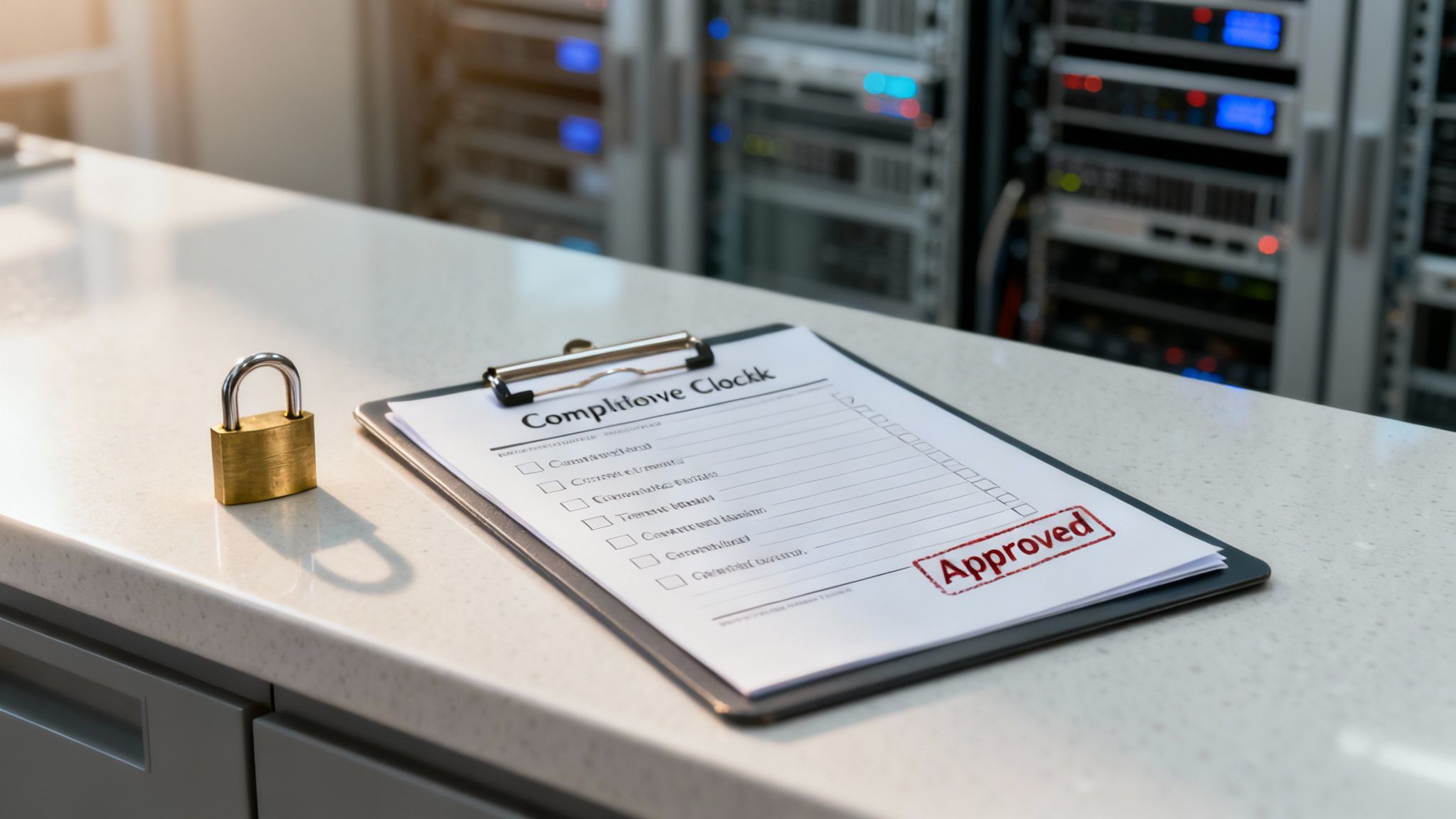
An effective framework uses standards like the NIST Cybersecurity Framework or CIS Controls to define security configurations and then leverages tools to automatically enforce and monitor them. This ensures assets are not only accounted for but are also continuously hardened against threats and aligned with industry mandates.
Why It's a Top Practice
A security-focused framework is a cornerstone of modern it asset management best practices because it systematically reduces risk. It helps prevent data breaches by ensuring assets are configured securely, simplifies audits with automated compliance reporting, and enforces a consistent security posture across your entire IT environment, from on-premises hardware to cloud infrastructure.
Key Insight: Asset management without an integrated security and compliance framework is just a list. True ITAM provides the controls to ensure every asset on that list is secure and compliant.
Actionable Implementation Steps
- Align Standards with Requirements: Choose a security framework (e.g., CIS Controls, NIST) and map its controls to your specific regulatory needs (e.g., HIPAA for healthcare). This creates a clear, actionable security baseline for all assets.
- Automate Compliance Scanning: Use tools like AWS Config or Qualys to continuously scan assets against your defined security baselines. These tools can automatically flag non-compliant configurations for immediate remediation.
- Implement Least-Privilege Access: Integrate your asset inventory with identity and access management (IAM) systems. Ensure that user access rights for each asset are strictly limited to what is necessary for their job function.
- Maintain Asset Classification: Tag assets in your inventory with data sensitivity labels (e.g., Public, Confidential, Restricted). This allows you to apply stricter security controls to assets that handle sensitive information. You can use our IT security audit checklist to guide this process.
8. Asset Tagging, Labeling, and Identification Systems
Once you have discovered your assets, the next step is to give them a unique, trackable identity. Implementing a standardized asset tagging and labeling system attaches a physical or digital identifier to every piece of hardware, from servers and laptops to peripherals. This practice bridges the gap between your digital inventory and the physical world, enabling quick identification, tracking, and management of assets throughout their lifecycle.
This system often uses barcodes, QR codes, or RFID tags that can be scanned with a mobile device. By scanning a tag, technicians can instantly access the asset's history, maintenance records, assigned user, and warranty information directly from the ITAM database, drastically reducing manual lookup times and errors.
Why It's a Top Practice
Physical asset identification is a crucial component of it asset management best practices because it enhances accuracy and efficiency. It simplifies physical audits, streamlines the check-in/check-out process for equipment, and helps prevent asset loss or theft. For industries like healthcare and manufacturing, precise tracking is not just efficient, it's essential for operational integrity and compliance.
Key Insight: A tag is more than a sticker; it's an asset's unique fingerprint that connects its physical presence to its digital record, ensuring accountability and control.
Actionable Implementation Steps
- Choose the Right Tag Technology: Select durable labels appropriate for the asset's environment. Use simple barcodes for office equipment, rugged QR codes for industrial settings, and consider RFID for high-value assets requiring real-time location tracking.
- Establish a Standardized ID Scheme: Create a logical and consistent numbering or naming convention for all asset IDs. This ensures that every asset has a unique identifier that is easy to interpret and manage within your system.
- Integrate with Mobile Scanning: Equip your IT team with mobile apps that can scan tags and interface directly with your central asset database. This empowers them to perform updates and audits in real-time from anywhere.
- Conduct Regular Label Audits: Periodically check that tags are present, legible, and correctly assigned. Damaged or missing labels should be replaced immediately to maintain the integrity of your tracking system.
9. IT Asset Governance and Policies
Establishing a formal governance framework is crucial for transforming IT asset management from a series of ad-hoc tasks into a strategic business function. This practice involves creating and enforcing clear policies, procedures, and accountability structures that guide every aspect of the asset lifecycle. It ensures that all IT asset activities align with business objectives, regulatory requirements, and security protocols, providing consistent oversight across the entire organization.
This framework defines who is responsible for what, how decisions are made, and what processes must be followed. It's the rulebook that prevents chaos and ensures that practices like procurement, deployment, and disposal are handled uniformly and effectively, often guided by standards like COBIT or ITIL.
Why It's a Top Practice
Strong governance is a cornerstone of mature it asset management best practices. It establishes clear lines of ownership and accountability, reducing risk and ensuring that asset-related decisions support long-term business goals. This formal structure is essential for maintaining compliance in highly regulated industries, like healthcare or finance, and for creating a culture of responsibility around valuable IT resources.
Key Insight: Policies without enforcement are just suggestions. A robust governance framework provides the authority and structure needed to ensure asset management practices are consistently followed.
Actionable Implementation Steps
- Secure Executive Sponsorship: Gain buy-in from senior leadership to champion the governance initiative. Their support provides the authority needed to enforce policies across different departments.
- Document Clear Ownership: Define and assign specific roles and responsibilities for every stage of the asset lifecycle. Document who is accountable for procurement approvals, maintenance schedules, and final disposition.
- Establish Key Performance Indicators (KPIs): Create measurable metrics to track the effectiveness of your asset management program. Examples include asset utilization rates, license compliance percentages, and total cost of ownership (TCO).
- Review and Update Policies Annually: Technology and business needs change rapidly. Schedule an annual review of all governance policies to ensure they remain relevant, effective, and aligned with organizational goals.
10. Cost Allocation, Chargeback, and Financial Tracking
Effective IT asset management extends beyond technical oversight into financial governance. This practice involves implementing systems to accurately track and allocate the costs of IT assets and services back to the specific business units that use them. By creating financial transparency, you transform IT from a generalized cost center into a strategic business partner, promoting accountability and smarter resource consumption across the organization.
This process uses data from your ITAM system to link specific hardware, software licenses, and cloud services to departmental budgets. It provides a clear picture of how technology investments translate into operational expenses for different parts of the business.
Why It's a Top Practice
Financial tracking is one of the most powerful it asset management best practices for aligning IT activities with business objectives. It helps departments understand the true cost of their technology usage, which encourages more responsible consumption and helps justify future IT investments based on departmental needs and ROI. It also provides the data needed for accurate budgeting and forecasting.
Key Insight: When business units see the direct financial impact of their IT consumption, they become active partners in cost optimization and efficiency efforts.
Actionable Implementation Steps
- Choose an Allocation Methodology: Select a model that fits your business, such as direct billing for dedicated assets or a usage-based model for shared services like cloud computing. Platforms like Azure Cost Management or AWS Cost Explorer are essential for this in cloud environments.
- Integrate with Financial Systems: Connect your ITAM platform with your company's enterprise finance system (e.g., SAP, Oracle) to automate the chargeback and reporting process, ensuring data consistency and reducing manual effort.
- Establish Clear Service Catalogs: Define your IT services and their associated costs clearly. This transparency is crucial for departments to understand what they are being charged for and why.
- Implement Regular Cost Reviews: Schedule quarterly meetings with department heads to review their IT spending, discuss consumption patterns, and identify opportunities for optimization or cost savings.
IT Asset Management Best Practices — 10-Point Comparison
| Item | Implementation complexity 🔄 | Resource requirements ⚡ | Expected outcomes 📊 | Ideal use cases 💡 | Key advantages ⭐ |
|---|---|---|---|---|---|
| Comprehensive Asset Discovery and Inventory Management | Medium 🔄 — initial mapping & discovery | Moderate ⚡ — discovery tools, inventory DB, network access | Full visibility, reduced shadow IT and compliance risk 📊 | Organizations needing an accurate cross-environment inventory 💡 | Accurate inventory baseline; prevents unauthorized assets ⭐ |
| Asset Lifecycle Management (ALM) | High 🔄 — end-to-end process integration | High ⚡ — procurement, finance, ops coordination | Optimized TCO, predictable refresh & disposal cycles 📊 | Firms focused on asset ROI and long-term cost control 💡 | Maximizes asset value; reduces failures and surprises ⭐ |
| Software License Compliance and Management (SAM) | High 🔄 — complex vendor rules & audits | High ⚡ — SAM tooling and skilled personnel | Reduced audit/legal risk and optimized software spend 📊 | License-heavy environments (Microsoft, Oracle, IBM) 💡 | Ensures compliance and lowers licensing costs ⭐ |
| Asset Configuration Management (CM) | Medium-High 🔄 — CI mapping and baselines | Moderate ⚡ — CMDB, automation, version control | Faster troubleshooting, reduced configuration drift 📊 | Complex systems with frequent changes (DevOps, hybrid infra) 💡 | Improves stability and supports change management ⭐ |
| Mobile Device and Endpoint Management (MDM/EMM) | Medium 🔄 — policy + device diversity | Moderate ⚡ — MDM platform, support teams | Stronger endpoint security and faster provisioning 📊 | BYOD programs and remote-work environments 💡 | Centralized control and rapid incident response ⭐ |
| Asset Performance Monitoring and Optimization | Medium-High 🔄 — telemetry and analytics pipelines | High ⚡ — monitoring infra, storage, analysts | Reduced downtime, predictive maintenance, better utilization 📊 | High-availability services and cloud infrastructure 💡 | Data-driven optimization and failure prediction ⭐ |
| Asset Security and Compliance Framework | High 🔄 — policies, controls, continuous auditing | High ⚡ — security tools, expertise, audits | Lower breach risk and regulatory compliance readiness 📊 | Regulated industries and sensitive-data environments 💡 | Strong security posture and auditability ⭐ |
| Asset Tagging, Labeling, and Identification Systems | Low-Medium 🔄 — physical rollout & standards | Low ⚡ — labels, scanners, RFID readers | Faster locating, reduced loss/theft, improved audits 📊 | Physical-asset-heavy sites (healthcare, retail, logistics) 💡 | Improved inventory accuracy and chain-of-custody ⭐ |
| IT Asset Governance and Policies | Medium 🔄 — policy design and oversight | Moderate ⚡ — governance committees, training | Consistent asset practices, accountability and risk control 📊 | Organizations needing standardized decision-making and oversight 💡 | Clear ownership, reduced unauthorized acquisition ⭐ |
| Cost Allocation, Chargeback, and Financial Tracking | Medium-High 🔄 — modelling and system integration | Moderate-High ⚡ — finance systems, reporting tools | Financial transparency, departmental cost accountability 📊 | Shared services, cloud cost management, chargeback models 💡 | Aligns IT spending with business value; identifies savings ⭐ |
Putting Your ITAM Plan Into Action
Navigating the complexities of the modern IT landscape requires more than just acquiring technology; it demands strategic oversight and meticulous control. The IT asset management best practices we've explored provide a comprehensive roadmap to transform your IT infrastructure from a simple cost center into a powerful strategic asset. Moving beyond a reactive, break-fix mentality to a proactive, structured ITAM approach is essential for any business, from a local dental practice to a growing law firm.
This journey begins with foundational principles. Establishing a complete and accurate asset inventory is the bedrock upon which all other practices are built. From there, implementing a robust asset lifecycle management (ALM) process ensures you extract maximum value from every piece of hardware and software, from procurement to secure disposal. These initial steps alone can dramatically reduce waste and improve operational efficiency.
From Control to Optimization
Once you have a firm grasp on what you own and its lifecycle, you can advance to more sophisticated levels of management. Mastering software license compliance (SAM) and configuration management protects your business from costly legal penalties and ensures system stability. Similarly, a strong security framework integrated with your ITAM strategy turns every asset into a defended point on your network, rather than a potential vulnerability.
The true power of mature ITAM, however, lies in optimization. By implementing performance monitoring, cost allocation, and clear governance policies, you can make data-driven decisions that directly align technology spending with business outcomes. This is where IT asset management transcends a simple administrative task and becomes a critical component of your financial and strategic planning, ensuring every dollar invested in technology delivers a measurable return.
Your Next Steps to ITAM Excellence
Implementing these IT asset management best practices is a marathon, not a sprint. The key is to start small and build momentum.
- Start with a Pilot Program: Choose a single department or asset category (like laptops or a specific software suite) to apply these principles. This allows you to refine your processes and demonstrate value without overwhelming your team.
- Prioritize Your Goals: Are you focused on cutting costs, improving security, or preparing for an audit? Your primary goal will determine which best practices you should tackle first. A business concerned about security might prioritize endpoint management, while one focused on budget will start with license compliance.
- Invest in the Right Tools: Manual tracking with spreadsheets is unsustainable. Evaluate and invest in an ITAM solution that can automate discovery, monitoring, and reporting, freeing up your team to focus on strategic initiatives.
Ultimately, a successful ITAM program creates a virtuous cycle of visibility, control, and optimization. It empowers your organization to be more agile, secure, and financially prudent, turning your technology investments into a sustainable competitive advantage.
Implementing a comprehensive ITAM strategy can be complex, but you don't have to do it alone. GT Computing specializes in providing managed IT services that incorporate these best practices, helping you gain control over your technology assets without the headache. Let our experts build a secure, efficient, and cost-effective IT framework so you can focus on running your business.
Keep your business running without IT headaches.
GT Computing provides fast, reliable support for both residential and business clients. Whether you need network setup, data recovery, or managed IT services, we help you stay secure and productive.
Contact us today for a free consultation.
Call 203-804-3053 or email Dave@gtcomputing.com
